Phnom Penh
For two days in Cambodia’s capital of Phnom Penh, it was all about open air lobbies with tropical plants, cool shimmering pools, and white canopied beds of sleep-beckoning glory. It was about moto-remorks: cute, often fringed, canopied trailers hitched to the back of motorbikes. It was about wats, or pagodas, Royal Palaces, and the horrors of the Khmer Rouge.
Wat Langka, one of Phnom Penh’s five original wats (pagodas), was founded in 1422 as a sanctuary for Holy Writings and for a meeting place for Cambodian and Sri Lankan monks. It escaped destruction as it was used as a storehouse by the Khmer Rouge. As I walked around, I was impressed by the huge Buddha statues, the offerings of fruits and incense, and the serenity on the grounds.
On the streets, I was captivated by the roar of the motorbikes, the tropical lushness, the bright-colored buildings in yellow, lime green and royal blue. I loved the Cambodian lettering on street signs. I got a great hour-long massage by a tiny and limber Cambodian girl for about $8 at OM. She didn’t use any oil or lotions ~ I would have had to pay more for that. After the relaxing massage, I read my book, Eaves of Heaven, falling asleep in the dream world of Cambodia.
The next morning, it was full immersion into the Khmer Rouge. Mr. Lo took me in his moto-remork to Tuol Sleng Genocide Museum, the former high school turned prison and interrogation center in Phnom Penh. It served as Security Prison 21 (S-21) for the communist Khmer Rouge regime from 1975-1979, the years when they were in power. The regime converted the buildings by enclosing them in electrified barbed wire. The classrooms became tiny prison and torture chambers and windows were covered with iron bars and barbed wire to prevent escapes.
I walked around the former prison, which had been kept in the state it was when the regime fell in 1979, except cleaned up. It was haunting. I first walked through the larger rooms where people were strapped to beds, tortured and interrogated. Nearly every room contained one metal-framed bed, a few torture instruments and a black and white photograph of someone being horribly tortured. When prisoners were brought here, they were stripped, and all their possessions taken. Then they made confessions of all their activities from the moment they were born until they were arrested, which were transcribed by the prison officials. Often these confessions would be thousands of words and would interweave truth with fictions of spying for the CIA or Vietnam (probably obtained under torture).
Men, women and children alike were tortured by horrible means: beaten and tortured with electric shocks, searing hot metal instruments and hanging. Some prisoners were cut with knives or suffocated with plastic bags. Other horrible means of torture were used as well, including waterboarding and pulling out fingernails while pouring alcohol over the wounds. Often the confessions obtained through such tortures included the names of hundreds of the prisoner’s friends, family or acquaintances who were guilty of some crime against the Khmer Rouge.
It was such an incredibly distressing place. So dark, I could almost feel the evil that once lurked here. After the torture rooms, I went to another building where there were rows and rows of tiny rectangular cells, the size of long skinny closets, where prisoners were shackled to the tiled floor. In other rooms, there were giant boards of black and white photos of young and old, male and female, Cambodians stared desperately at the camera. It was deathly quiet in the museum. Deathly.
The Khmer Rouge apparently kept detailed records of every prisoner, every confession, every action they took. All this was on display at the museum.
It’s estimated that anywhere from 17,000-20,000 prisoners were held here during the Khmer Rouge reign, with 1,000-1,500 at any one time. Prisoners initially included people from the previous Lon Nol regime: soldiers, government officials, as well as academics, doctors, teachers, students, factory workers, monks, engineers, etc. Later, the Khmer Rouge paranoia extended the killing to those within their own ranks. Most prisoners stayed for 2-3 months, after which time they were killed and buried near the prison. When space eventually ran out, the regime transported prisoners to the Killing Fields of Choeung Ek.
When I left this horrible prison, Mr. Lo drove me in his moto-remork to Choeung Ek, about 15 km outside of Phnom Penh. I followed in the footsteps of around 18,000 people who were transported from Tuol Sleng to The Killing Fields and brutally murdered.
It was a slow drive to the Killing Fields, with motorbikes buzzing all around. Again, as in Vietnam, we passed businesses of every sort imaginable operating out of concrete cubbyholes with rusty corrugated metal roofs. In store fronts, there were racks of old-fashioned and dirty Pepsi bottles filled with a yellow-green liquid. I couldn’t help but wonder what that liquid the color of urine was in those dirty bottles. Later, I found out they contained gasoline for motorbikes.
Barber shops were everywhere, men standing with scissors in hand snipping away at customers wearing bibs around their necks. Children ran around on the streets in dirty clothes with naked bottoms exposed. In the midst of the poverty, shiny cars with LEXUS emblazoned on their sides cruised the streets. Women walked the streets in cartoon-covered pajamas while men played billiards in open air concrete garages. In open-air movie-theater type rooms, sparse groups of people sat in plastic chairs watching a community TV set. Huge carts of stinky durians and leafy greens and bamboo and sugar cane were pushed by little old ladies in colorful mismatched outfits. Men covered in black oil toiled away at engine repair shops, steel welding operations, or tire shops with corrugated tin roofs. Dust settled, permeated, resided.
We buzzed on. I clutched my backpack between my legs on the floor of the moto-remork because Mr. Lo warned me against keeping it on the seat. I had read that people snatched bags from foreigners as they drove by on their motorbikes. Corncobs cooked on carts. Hyundai Porters (like I saw constantly in Korea) and Toyotas rolled down the poorly maintained streets. Surprisingly, I saw a garbage truck, the first one I’d seen in either Vietnam or Cambodia. I also saw garbage dump-type places. The debris was not as prevalent here as what I saw on the fringes of Hanoi. The Cambodia-Japan Friendship Skills Training Center buzzed with people-in-training.
Forty-five minutes later at the Killing Fields, I faced the entrance gate and a giant commemorative stupa. I discovered later that the stupa is filled with the skulls of 8,000 victims who were murdered here. I went directly to the tiny museum where a film was in progress about the history of Pol Pot and his Khmer Rouge regime and of this place. The film was brutally honest and didn’t try to gloss over the barbarity of this horrible regime. I have found often in my travels that museums try to downplay the despicable actions of their country or to gloss over history.
The film here at Choeung Ek was truly sickening and brought me, and many other tourists, to tears. After the film, I collected myself, and walked around the grounds where I saw some of the mass graves that were unearthed: one where only naked women and children were found. Another that contained headless corpses. Yet another only miscellaneous bone fragments. There was a tree where the regime would hold babies by the feet and bash their heads against the trunk. Their rationale for killing babies was so that the children of victims wouldn’t seek revenge on the regime when they grew up. One sign said that a particular tree held a loudspeaker to drown out the screams of those being bludgeoned, so as not to disturb the neighbors.
To save ammunition, the prisoners at Choeung Ek were usually bludgeoned to death with iron bars, pickaxes, machetes and many other makeshift weapons. Others were killed with poison, spades or sharpened bamboo sticks. Prisoners were often forced to dig the mass graves themselves, but as they were weak, the graves were often shallow. Even decades later, it was said that clothes, teeth and bones surfaced during heavy rainfalls from the huge numbers of bodies that were still buried there.
After this depressing morning, which was educational but emotionally draining, Mr. Lo took me back to town to Wat Phnom, meaning Hill Temple. It was set on the only hill in Phnom Penh, more like a mound at 27 meters. The locals swarmed all over the place. Here Buddha worship was taken to extremes; it was big business. Inside the temple were hundreds of Buddhas, each of which was holding on its crossed legs or in its arms several Cambodian Riel, bananas, oranges, flowers, or little skewers of white flowers that smell like freesia. I walked behind a young Cambodian guy who devoutly walked around the perimeter of Buddhas, bowing and placing a Riel on each Buddha.
There were easily 25-30 people within the temple busying themselves arranging or collecting or distributing the multitudes of offerings. Others were on their knees praying. Outside in the back were other smaller Buddha statues in front of which, on a beautifully colored quilt, other food and fruit and flower offerings were placed. As soon as the quilt got full, a man promptly gathered up the offerings. Further back on the hilltop behind the temple, I found schoolchildren eating the fruit that had been removed from the Buddhas. On the far right of the temple was a production area where people were arranging flowers, cutting fruit, burning incense, slicing raw meat and offering these items for sale.
I came across several stone dog figures with panting mouths; in their mouths were strips of raw bacon and under their sitting figures were raw eggs that had been cracked open and were slowly hardening in the heat. Other men and women came by to whisk away the bacon and the eggs. It was commerce at its liveliest, this Buddha offering activity. All abuzz. It was like the altar guild decorating for Christmas Eve service in an Episcopal church, except this occured every day. Outside the temple were young boys with birds in cages. They sold the birds’ freedom to people who wanted to earn merit with the Buddha. Later, the birds returned to their cages, where they were resold and resold and resold, an infinite number of times.
Legend has it that in 1373, the first temple at Wat Phnom was built by a lady named Penh as a home for four Buddhas that she found floating in the Mekong River.

Wat Phnom

the buddha clutches his offerings at wat phnom

Buddha at Wat Phnom
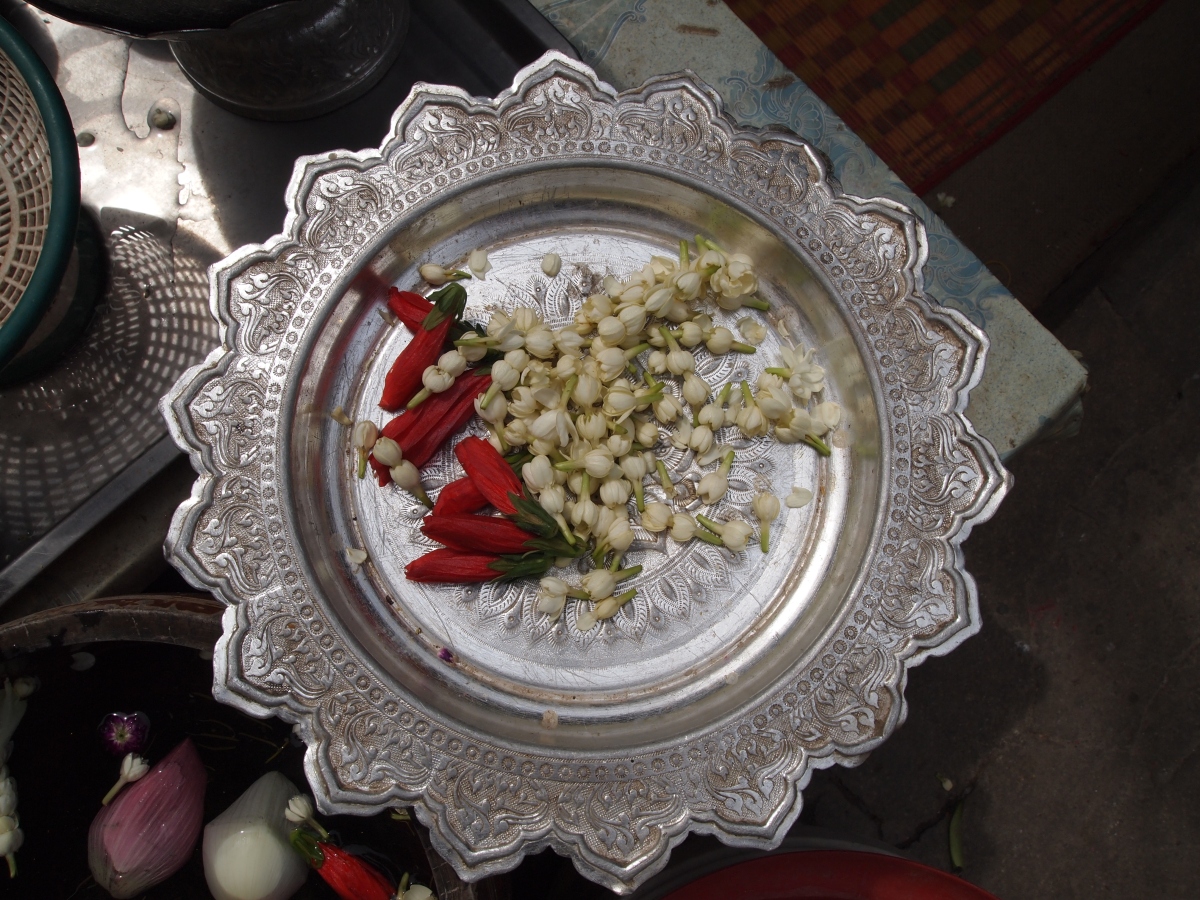
offerings
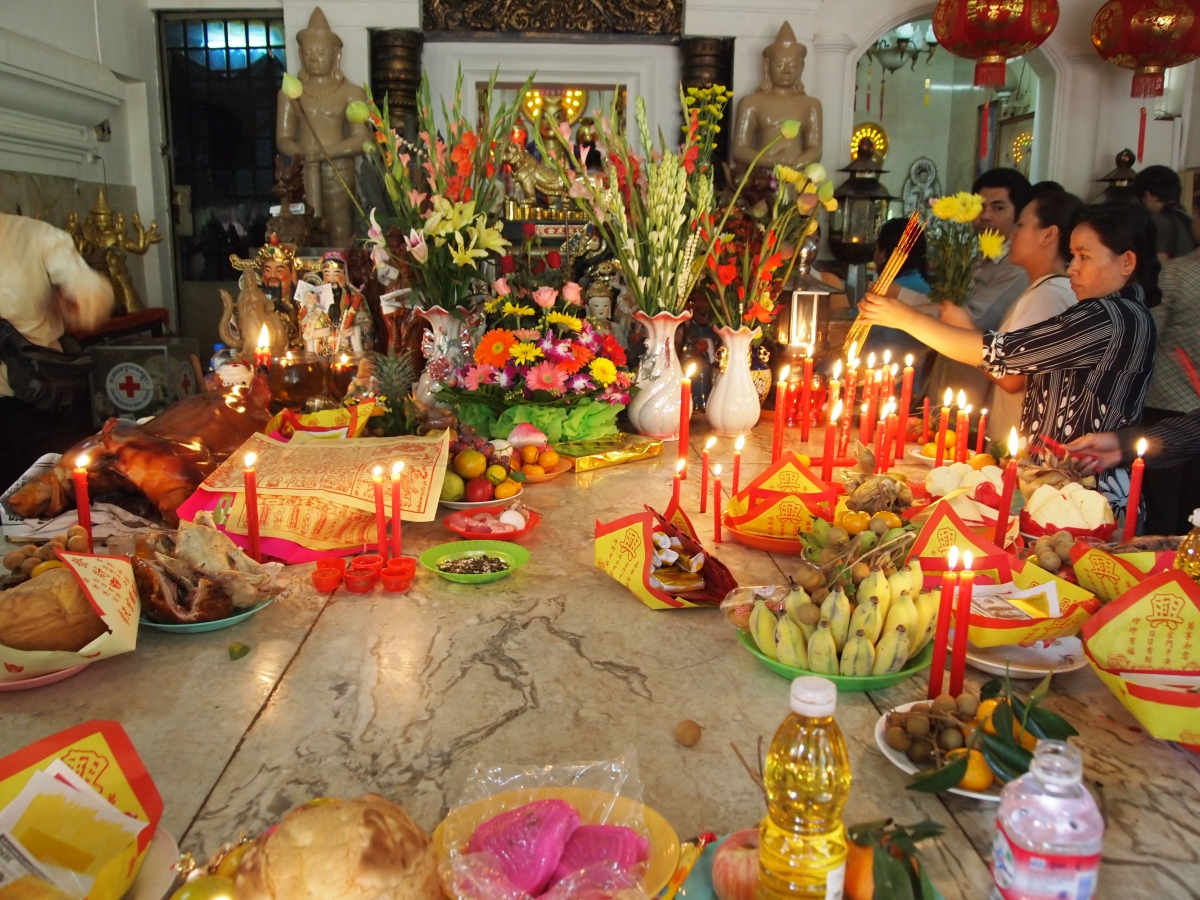
the production center where offerings are bought and sold at wat phnom
To finish off Phnom Penh, I visited the Royal Palace and the Silver Pagoda. The Royal Palace was a complex that served as the royal residence of the King of Cambodia. The Kings of Cambodia have occupied it since it was built in 1866, except during the tumultuous period of the Khmer Rouge. It all yellow buildings with curlicue roofs, in classic Khmer architecture.
I walked around the gardens looking for the Silver Pagoda, but I didn’t see any silver buildings. Finally, I asked someone and they pointed out a building I had already been inside, which certainly did not have the silver exterior I expected. Inside the building, no photographs were allowed. It housed a beautiful 17th century Emerald Buddha, which I certainly WANTED to take a picture of, but with all the guards hovering, I didn’t dare. It also boasted a near-life-size Buddha studded with 9,584 diamonds and dressed in royal regalia. Apparently, before the Khmer Rouge, the temple floor was inlaid with 5,000 silver tiles, thus the name Silver Pagoda. Most of this floor was now covered up with carpeting.
I spent quite some time wandering through the Royal Palace grounds, checking out the gardens with their beautiful flowers and topiary, the faded murals on the walls, Buddhas sitting serenely in little gardens, and the elephant room with its decadent elephant thrones.

Royal Palace

Royal Palace
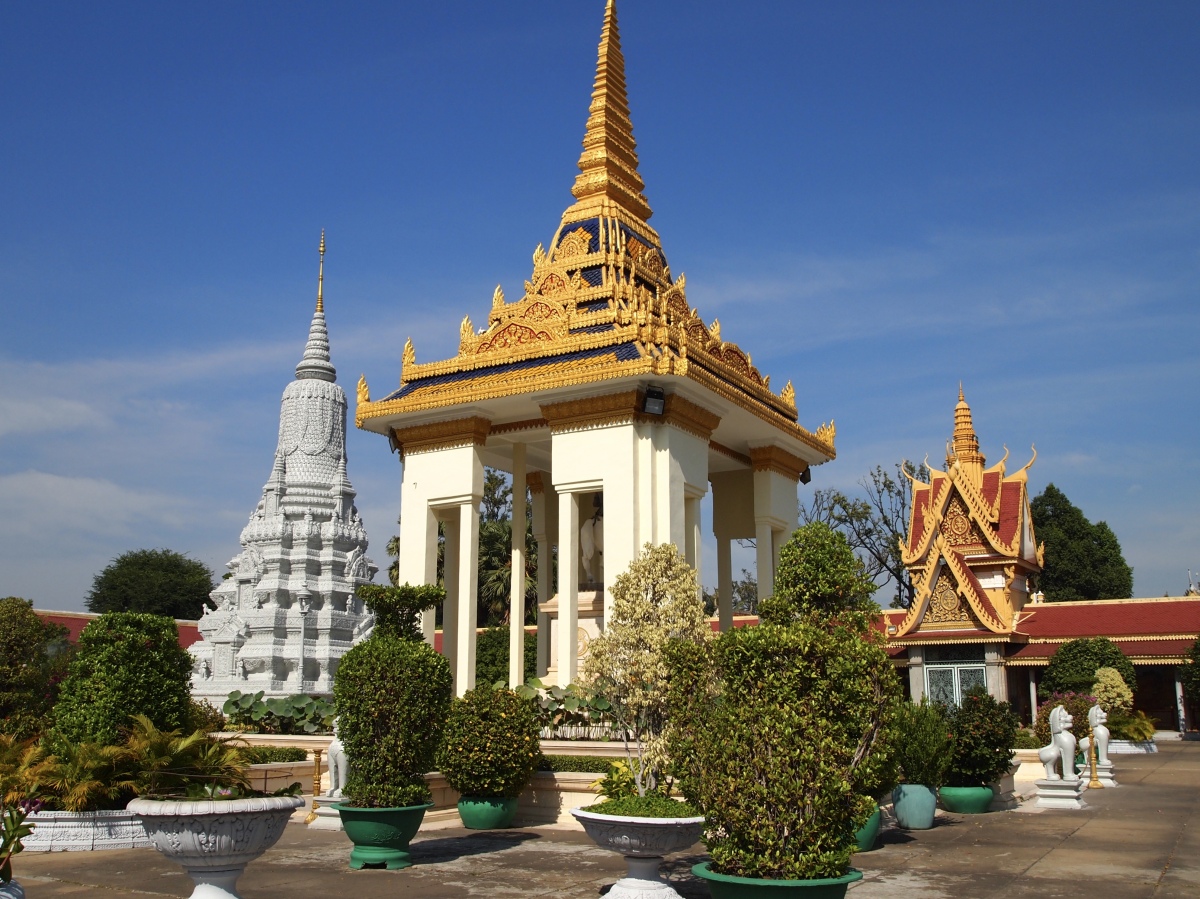
Royal Palace

painting of the Royal Palace

Silver Pagoda

Royal Palace

Buddha on the Royal Palace grounds
Though fellow travelers had told me Phnom Penh was nothing special, I disagreed. I found it quite pleasant. It was warm and skies were blue, brushed with wispy white clouds. I saw less pollution, less trash, a better infrastructure than that in Vietnam. It was civilized and genteel. Even though it was poor, Cambodians seemed to have a grace and elegance about them, much like the carvings of apsara (woodland spirit) dancers on their ancient temples. When they greeted me, they put their palms together in a prayer position, bowed their heads and said “Hello, Madame.” It was charming.
Siem Reap
For four days in Siem Reap, it was all about the Angkor temples. I got a tuk tuk ride to see sunset at Angkor Wat. My driver dropped me across the 2.2-mile-long moat that circles the outer gate of the famous temple. I walked across the moat and through this gate and there in front of me, across a wide expanse of lawn, was Angkor Wat. Immediately, I was taken aback, and disappointed. All over the front of the facade was emerald-green netting, put up for renovation. There was no way to take a picture without the ugly netting. I walked up closer and found, despite the netting, the temple was still lovely because of the way the setting sun colored the stone. It was rich and golden-red, glowing. I went inside the temple complex and looked at all the beautiful carvings of apsara dancers and royal people and gods and battles and everyday life. Apsara are beautiful, supernatural women. They are youthful and elegant, and proficient in the art of dancing. A huge Buddha wrapped in an orange sash surrounded by gold glitz and glittery leaves, flower offerings before him, beamed serenely down at me.
It was stunning, the waning light on the temple. I wandered around the ancient stone buildings, fading to skeletons in their slow decay. How many years before the temple would turn to dust? How many centuries, how many generations? The power of nature was indefatigable. It slowly eroded everything man put in its midst.

Angkor Wat, decked out in netting

Angkor Wat

Angkor Wat
Most people know about Angkor Wat, but here’s a tidbit of history. It is a temple complex built by King Suryavarman II in the early 12th century. It was the state temple and capital city and was first Hindu, dedicated to the god Vishnu; later it became Buddhist. Apparently, it’s the world’s largest religious building. It’s said the building of this temple was likely the cause of the demise of the Khmer empire.
I took my time wandering, captivated by the way the light attached to the stone.

Angkor Wat

Angkor Wat

Angkor Wat

Sunset at Angkor Wat
After dinner, I wandered through the night market in Siem Reap, where I was tempted to put my feet into a tank of fish that eat the dead skin off your feet. The night market bloomed with colorful silk scarves, handbags, smiling Buddhas, wooden apsara dancers, T-shirts, pillows, tablecloths, glittery jewelry. So many things to buy, but so little ability to carry them all home. I gazed into big open-air rooms with teak lounge chairs where tourists were having hour-long foot massages for $3. I came away with a handful of scarves for $4 each and a 3-piece Buddha plaque with gold flecks on it. I loved this kind of market, much like the Sunday market in Bangkok, with so many enticing things that you could spend days there, lost in the glamour of it all.
The next morning, Mani, a 35-year-old chubby Cambodian whose English pronunciation was quite mangled, served as my guide.
While riding together in the back seat of a Toyota sedan to Angkor Thom, Mani told me that 1.4 million people lived in Siem Reap and 14 million lived in the whole of Cambodia. Siem Reap means “Thai defeated,” the name resulting from the defeat of Thailand by Cambodia in some 16th century war. Whenever Mani talked, I found myself having to think hard about what he was trying to say. There were recognizable English words interspersed with babble, and many times I either just sat quietly and nodded, not having a clue what he was saying, or I questioned him, which inevitably led to more confusion.
We entered the south gate of Angkor Thom, known as Great Angkor or Great City. The entire city is 10 square kilometers and was built by the “greatest Angkorian” King Jayavarman VII (1181-1219). This king came to power following the Khmer defeat by the Chams. In its heyday, in the 13th century, the city had a population of 1 million, while London was a tiny town of 50,000. The outer wall of the city is a normal steep wall on the outside, but on the inside, dirt ramparts lead to the top of the wall; these enabled soldiers to climb up easily to defend the city.
Cambodia practices Buddhism, Hinduism, and, in the mountains, animism. In the first century, Hinduism took root in Cambodia. From the 1st to the 3rd century, Buddhism took over. Later, in 1113 when Angkor Wat was built by Suryavarman II, he dedicated it to the Hindu god Vishnu. Until the 11th century, the king had believed in Buddhism.
In Angkor Thom, all public houses, buildings and palaces were constructed of wood. Brick or stone was reserved for the gods. This is why today, all that remains of the city are the skeletal remains of the temples and holy places.
We went to the Bayon, which King Jayavarman VII built and which showcased his great ego. Within the Bayon were 54 Gothic towers decorated with 216 smiling faces of Avalokiteshvara, who bore a great likeness to the king. These faces stared down from every angle, looking like Big Brother watching. Bas-reliefs carved all over the Bayon had over 11,000 figures. Carvings on the outer wall depicted everyday life in 12th century Cambodia. There were some Cambodians in costume and we took pictures with them for a tip (of course).
We walked up another 200 meters to the Baphuon, a pyramid structure that represented the mythical Mt. Meru, home of the gods. This marked the center of the city, but was built before Angkor Thom was constructed. It was built on land filled with sand, so the structure has been unstable throughout its history. The French apparently started dismantling the structure in 1960 in order to reconstruct it. Each stone taken from the Baphuon was numbered and records were kept of each stone and where it belonged. Apparently, reconstruction efforts were disrupted by the Cambodian Civil War and then all records were destroyed during the Khmer Rouge years. Today, thousands of huge stones litter the grounds around the structure, the scattered pieces of the world’s largest 3-D jigsaw puzzle. The reconstruction efforts are seriously hampered, as the archeologists must take a couple of blocks at a time to see if they fit in a particular spot. If they don’t fit, the blocks are taken back to their spots, and 2 more blocks are taken. I could see, looking over this field of stones, the project’s immensity, and I wondered how many lifetimes it would take before this structure was reconstructed.
We next visited Ta Prohm, a temple built from 1186 by Jayavarman VII. Ta Prohm is the place you always see in photographs of the Angkor temples. It is in a severe state of ruin and nature has overtaken it. Trees grow over its decaying walls, their roots strangling the stone structure like giant boa constrictors. Moss and lichen grow all over the bas-reliefs. Shrubs sprout from rooftops and balconies. Jumbles of intricately carved stone blocks clog corridors.
It was like a scene from Indiana Jones; even Angelina Jolie’s Tomb Raider had parts filmed here. I kept thinking I’d seen nature in all its destructive power taking over this place, and then I turned a corner and found another huge tree grasping a wall, its monstrous roots like an octopus, encircling its prey.
Finally, Mani and I went to Angkor Wat for the official tour. He told me Angkor Wat is the largest religious structure in the world and it was never abandoned to the elements as other temples were. The temple is a miniature of the universe, the central tower representing Mt. Meru, with smaller surrounding peaks of the lower towers, bounded in turn by continents (lower courtyards) and oceans (the moat). Angkor Wat was built by Suryavarman II (1113-1140), who unified Cambodia and extended Khmer influence all over southeast Asia. He devoted and consecrated the temple to the Hindu deity Vishnu. It was built about the same time as European Gothic temples such as Notre-Dame in Paris. Virtually every surface was carved in bas-reliefs. It’s estimated the workers who built the temple would have been in the thousands, including many highly skilled artisans.
The temple was built of some 5 million tons of sandstone blocks quarried 50 km away and ferried down the Siem Reap river on rafts. Experts say that today it would take 300 years to build Angkor Wat, but in reality it was begun soon after Suryavarman II took the throne and finished soon after his death, over 40 years.
In the evening, I watched an Apsara show in a huge open-air pavilion; it was beautiful, with the delicate movements of the dancers and their exquisite costumes. But once the waiter served me a beer early on, I never saw him again the rest of the night. I hated venues like this, with their bulging crowds of tourists, pigging out on huge portions of bland uninspired Western food.
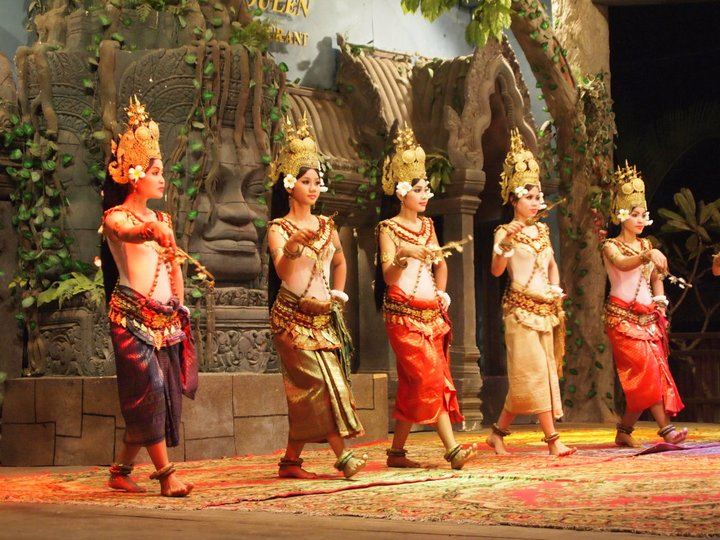
Apsara dancers
On Saturday, I went further afield. Beng Mealea was 65 km northeast of Siem Reap over a sealed toll road. We cruised by the poorest of the poor, me sitting in the back seat staring out the window at houses on stilts in the middle of nowhere. Through the window I saw the same, same, same. Palm trees and palm-leaf and betel-leaf houses on stilts with whole lives being lived underneath the homes, in their shadows. In the wet season, the occupants stayed inside, but in the hot season, they slept in hammocks under the houses.
Dirty brown children ran amok in mismatched clothes, mothers stirred food over fires, fathers worked on engines on these dirt floors, swept to a hard surface. Colorful clothes hung on lines under the houses, or in the sun. Huge bales of hay sat under the shade of chestnut trees. I asked the driver how these people made a living and he said most of them grew rice. There was not enough water out here to grow vegetables. He said the rich people had mango farms or cashew nut farms. These were not the rich people.
We arrived at Beng Mealea. Here nature ran rampant even more than it did at Ta Prohm. Trees and bushes and vines strangled every standing wall, every fallen stone. This temple was built to the same floor plan as Angkor Wat by Suryavarman II, but the floor plan was virtually unrecognizable. It was an incoherent mess. Ta Prohm at least retained some semblance of its former self. This was just a jumble of fallen stones and decaying walls. Though the Lonely Planet described it as “Angkor’s ultimate Indiana Jones experience,” I thought it was too much. I didn’t know why they didn’t just bulldoze it all down. At the very least maybe someone could try to make some sense out of it all.
Though our destination of Kbal Spean was only 50 km northeast of Siem Reap (shouldn’t that be around 15 km from Beng Mealea, which is 65 km northeast of Siem Reap?), it took at least an hour and a half on a dirt road. I kept staring out the window at the nothingness around. There were long stretches where there weren’t even any houses. I was glad I trusted my driver, because if we were on a road like this in Mexico or many other places, I’d have been worried about a gang of bandits attacking us.
We arrived finally at Kbal Spean, known in English as the “River of a Thousand Lingas.” It took 1.5 km to climb uphill to the riverbed which was carved with ancient figures. It was amazing that someone carved these so long ago, pieces of art in the rock bed. The driver mentioned how someone found someone else decapitated here in these woods. I said, What?? I remembered how one tourist told me that the police reports in the paper often listed decapitation crimes. I said, Who was decapitated? A local person or a tourist? He looked at me funny. Finally it dawned on me that he was saying some of the CARVINGS were decapitated, much like the ones at Angkor Wat. Heads chopped off and sold for a profit in some underground market.
Finally, we headed to the finest temple of them all, Banteay Srei. This temple was cut from stone of a pinkish color and the stone carvings were exquisitely detailed. Though small, this temple was neat, orderly and quite beautiful. Carved monkeys sat at strategic corners of the temple, like little deformed midget kings. This temple was built in AD 967, commissioned not by a king but by a Brahman.

Banteay Srei
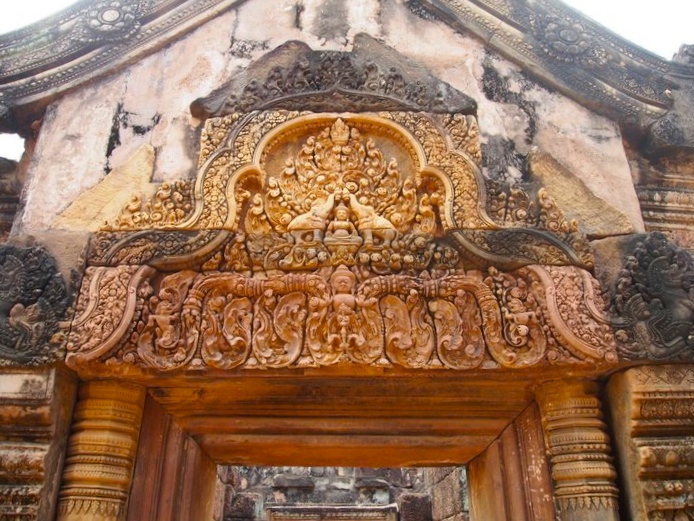
Banteay Srei

Banteay Srei

Banteay Srei
We made a quick stop at the Cambodia Landmine Museum, where the history of landmines was told, to bring awareness of the pervasive landmine problem in Cambodia. It also was a home which provided victims of landmines with education and support.

Cambodia Landmine Museum
On my last day in Cambodia, I decided at the last-minute to see some more of the Angkor temples. I walked through Preah Khan (Sacred Sword), one of the largest complexes at Angkor. I liked the entrance over the moat with its decapitated demons and gods. I ran into several poor and dirty Cambodian children sitting on stone stoops, trying to get handouts from tourists. I walked around through the complex admiring all the beautiful carvings of Apsara dancers and kings. It was a maze of vaulted corridors and jumbled stones, much like many of the other temples. At this point, these temples were starting to look alike.
We made a quick stop at Ta Som, another small temple built in the 12th century for Jayavarman VII. I spent most of my time here admiring and taking pictures of the intricate carvings in reddish stone.
I was hot and tired by this time and all I want to see is Pre Rup. It was a reddish-colored mountain temple, built for Khmer King Rajendravarman in 961 AD. It was built of brick, lacerite and sandstone, and its pyramidal structures throughout had bushes and grasses sprouting off their tops, like tufts of silk on a corncob. I loved the deep rich color of this temple in the sunlight. This, Banteay Srei and Ta Prohm were my favorite of the Angkor temples, for their rich beauty and their interesting features. I climbed and climbed the stairways to heaven at this beautiful temple.

Pre Rup

Pre Rup

Pre Rup

Pre Rup
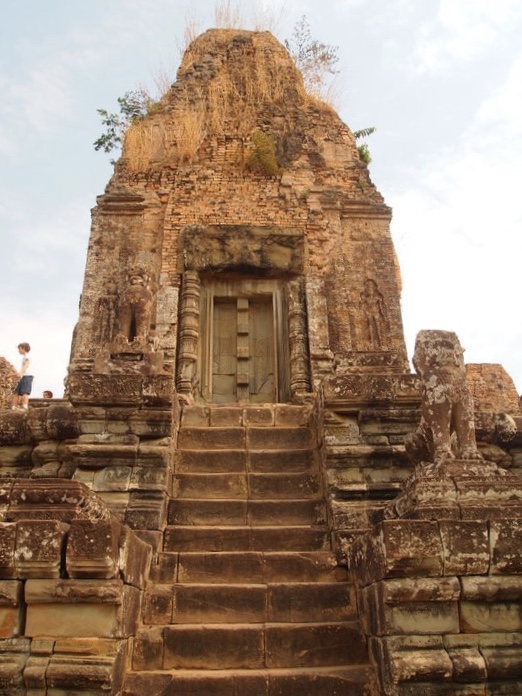
Pre Rup
I loved the food and ambiance in Cambodia. At Phnom Penh’s Boat Noodles, a two-story wooden open air restaurant abundant with greenery, I ordered a Tiger beer and a Cambodian specialty called Grilled Amok fish wrapped with banana leaf. It was served with some light sauces, fragrant with cilantro. The breakfast buffet at Villa Langka was a still life, redolent with tropical fruits: melon, papaya, bananas, mango, pineapple, passionfruit, dragon fruit.
A riverside restaurant reminded me fondly of the Grand Cafe on the Nile in Ma’adi, a suburb of Cairo. A Tiger beer was served with miniature peanuts with the skin still on them, smothered in salt. The surrounding tropical plants whispered in the breeze. I heard the buzz of construction activity on the river, the roaring engines of cranes moving the mud in the river, the clanking of an anchor on a riverboat. In the restaurant, I heard the nasal sounds of Asians talking, the whining Khmer music. My meal of fresh steamed fish in lime juice arrived, artfully prepared, with three banana leaf cups full of peppers and sauces.
At the restaurant Malis, a seated Buddha greeted me at the entrance. The setting was stunning, a low-lit open air courtyard around an L-shaped pool brimming with lotus leaves. Giant palm fronds and bubbling fountains created a peaceful atmosphere.
I had a glass of red wine because the dinner I ordered, baked goby fish with mango dips, took 45 minutes to prepare. Since I was alone and 45 minutes went by slowly, I had another. The fish arrived with scaly skin and a viciously ugly head, but the fish flesh was tender and delectable, especially with the refreshing mango dips. For dessert I had the Malis Signature Mousse, a “delicate mousse infused with jasmine, ginger and Khmer honey with a side of fresh fruit salad.” Mmmm….
The Angkor Palm in Siem Reap was a lovely colonial-type restaurant that spilled out into the street. I sat outdoors on the sidewalk so I could watch the people walk by. I ordered the Angkor Palm Platter for One, a sampler of Khmer food: fresh spring roll, green mango salad with special smoked fish, local pork spareribs roasted with honey and spicy sauce, homemade green curry with chicken, cha’ta kuong or stir-fried morning-glory with oyster sauce, steamed rice, and a Khmer dessert of white pumpkin with a sugary sauce. As usual, I enjoyed a glass of red wine.
The Sugar Palm was an open air cafe on the second floor of a house, with dark wood and a large square bar in the middle. When I went in, there were no seats so I asked if I could eat at the bar, my favorite thing to do anyway. I ordered a glass of red wine and the owner, Kethana (Cambodian but with a strong Australian accent), recommended the Asian eggplant with minced pork. I wasn’t usually a pork eater, but this was one of the most delectable things I ate on my entire trip.
Cambodia was different. It was definitely Asian, but it seemed a special culture, one distinguished in class from the others. Cambodians were gentle, delicate yet sophisticated. They were classy, open, kind-hearted, lovely. They were like gold and emerald treasures along the rice paddies and papayas of the Mekong. Butterflies. Tinkling bells. Hummingbirds. Gentle but exquisite in their speech, their music, their movements, and especially, in their hearts. I couldn’t help but wonder how the Khmer Rouge ever took root in this gentle country? How could it have possibly happened?
When I returned back to Korea after visiting Vietnam and Cambodia, I wrote a blog about my time there, from which this post is condensed: rice paddies & papayas: cambodia.
*Tuesday, January 18 – Sunday, January 23, 2011*
*************************
“ON RETURNING HOME” INVITATION: I invite you to write a post on your own blog about returning home from one particular destination or, alternately, from a long journey encompassing many stops. How do you linger over your wanderings and create something from them? How have you changed? Did the place live up to its hype, or was it disappointing? Feel free to address any aspect of your journey and how it influences you upon your return. If you don’t have a blog, I invite you to write in the comments.
For some ideas on this, you can check out the original post about this subject: on returning home.
Include the link in the comments below by Sunday, November 3 at 1:00 p.m. EST. When I write my post in response to this challenge on Monday, November 4, I’ll include your links in that post.
This will be an ongoing invitation on the first Monday of each month. Feel free to jump in at any time. 🙂







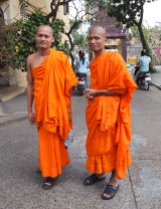
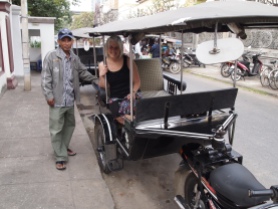

































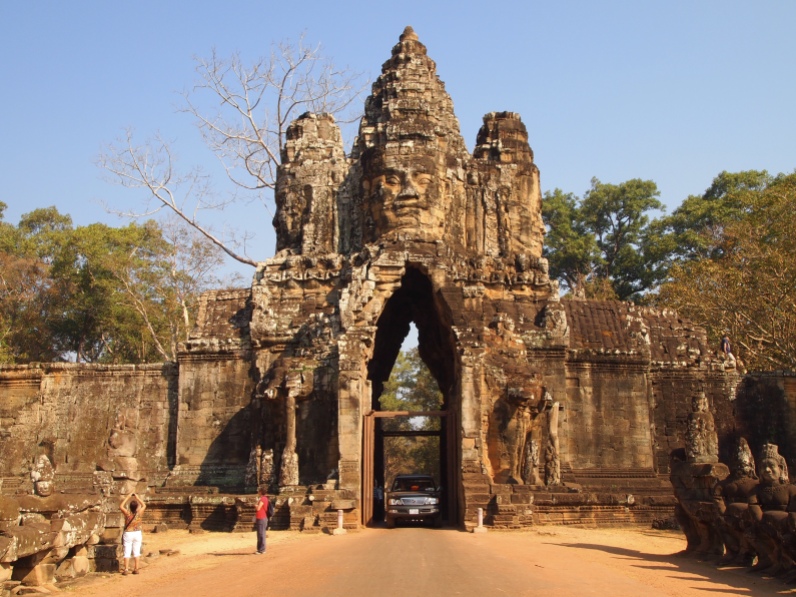










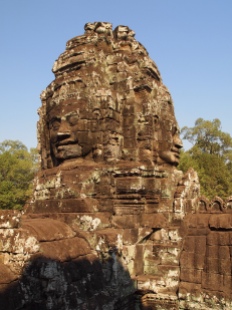






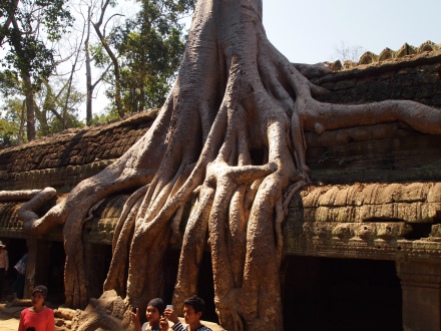









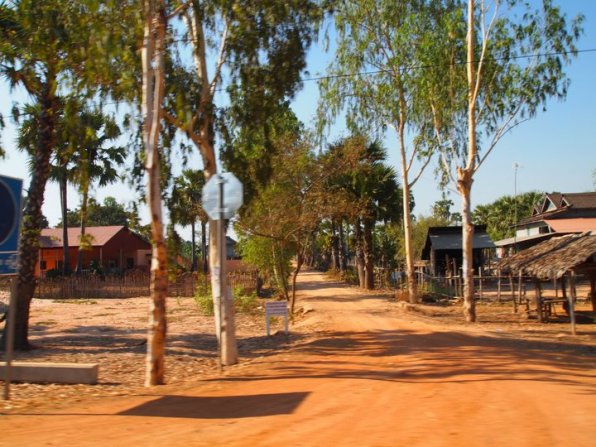







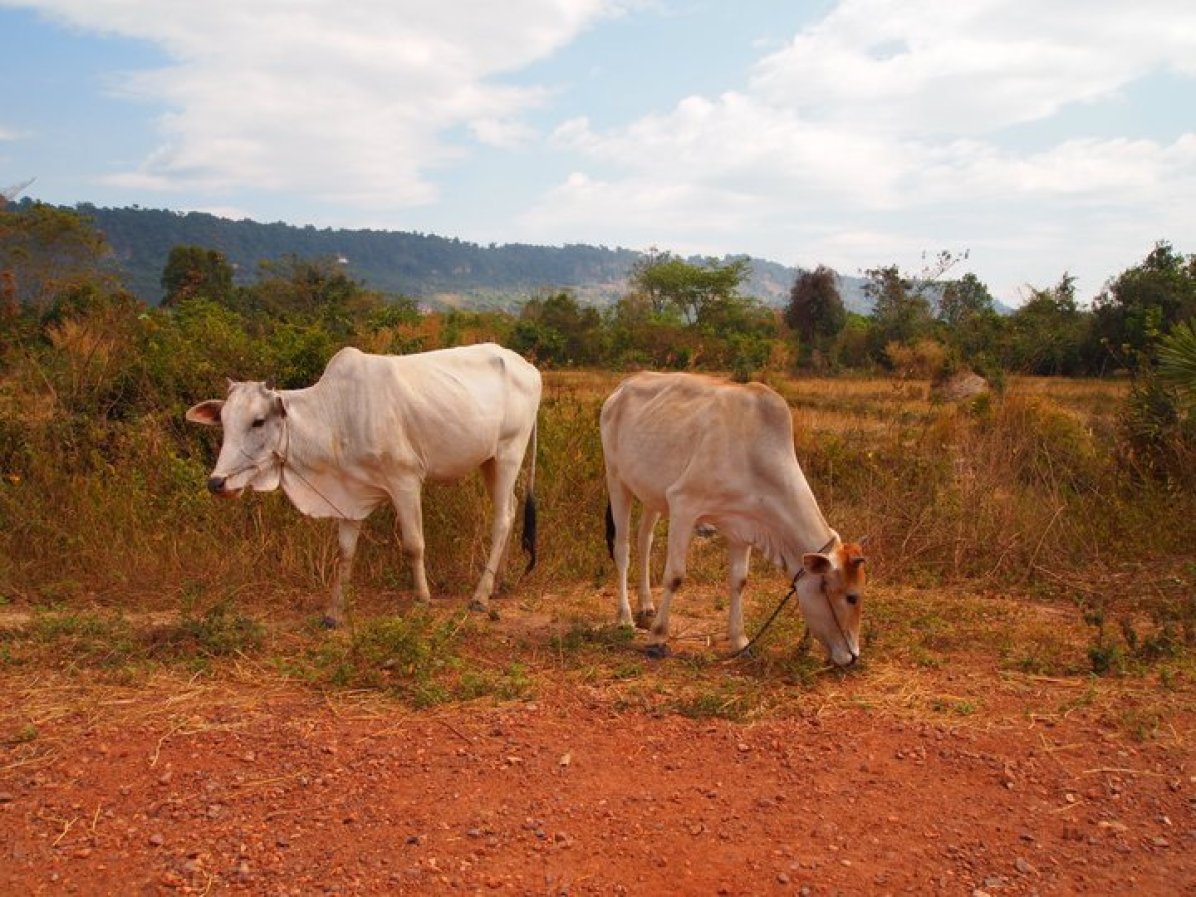







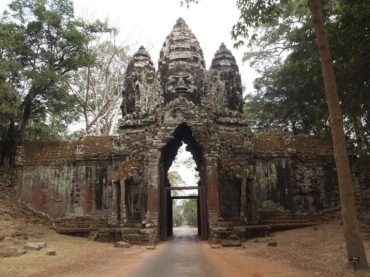







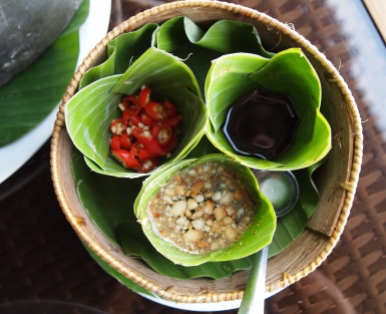







What a visit! Everything from man’s inhumanity to man, fantastic ruins and beautiful temples… I was due to go to Cambodia about 4 years ago, but had to abandon it due to worsening health. So thanks for the very descriptive Virtual tour, Cathy
LikeLike
I’m glad you enjoyed my virtual tour, Sue. Yes, it covered everything from the horrific Khmer Rouge to the beautiful ruins and temples. And a very genteel culture, I thought. I loved it; Cambodia and Myanmar were my favorite southeast Asian countries. 🙂
LikeLiked by 1 person
Did you go to Laos….I would have loved to have seen the French Colonial architecture of Vientiane…..
LikeLike
Oh, Sue, how I wish I had gone to Laos. I wanted many times to go while I lived in Asia, and for some reason the flights always seemed so complicated and expensive. I now wish I’d gone because who knows if I’ll ever make it back to that side of the world. I’d love to see that French Colonial architecture too. 🙂
LikeLiked by 1 person
Well, if you do go, take some photographs for me, Cathy!
LikeLike
Ok, I will, but I can’t say whether it will ever happen! 🙂
LikeLiked by 1 person
😊😊
LikeLiked by 1 person
It’s so heartbreaking, isn’t it? I vividly remember the pictures coming through of the skulls found in the killing fields. I was a student at the time and couldn’t believe what I was seeing. Not so naive now, sadly. Anyway, to be more cheerful – lovely photos!
LikeLike
The whole thing about the Khmer Rouge is heartbreaking, Anabel. What an evil heartless regime. I can’t believe that even today, many who participated in the regime still walk the streets unpunished. You talk of being naive and remembering the pictures of the skulls. I am sad to admit I was totally clueless. Thanks so much for your kind words about the photos. 🙂
LikeLike
I’m sure there are still some of them left. Don’t know how they can live with themselves.
LikeLike
I don’t either.
LikeLiked by 1 person
Your Cambodia is a lovely place, almost makes one forget the horrors that came out of that country and the fact that Hun Sen (who was part of Pol Pot’s band of ugly brothers) was elected as Prime Minister or President of that country where he continued the dictatorship, although without the killing fields. I loved Cambodia but I didn’t see as much as you did for which I envy you. I was told, and I can believe it, that the reason their food is so good and the sauces so enriching, is the French influence.
LikeLike
I agree that much of Cambodia is lovely, and so are the people. Luckily, or unluckily, the country preserves its horrific history in the prison and the killing fields, which are a must-visit for everyone. It’s so hard to believe that such a brutal regime came out of these gentle people. This is exactly what comes from scapegoating. Leaders manipulated the poor to get them to rebel against the wealthy and educated and to torture, kill and “re-educate” them. I feel this scapegoating is going on even today in my own country, which I find despicable.
I believe you are right about the Cambodian food being so good because of the French influence. I think that is also the case in Vietnam, that and all the fresh ingredients.
LikeLike
So much beautiful architecture to enjoy in this post.
LikeLike
I love so much of Asia’s architecture! 🙂
LikeLiked by 1 person
What exquisite detail! You certainly know how to pack your travelling days chock-a-block, and how to recreate it for us. Thank you.
LikeLike
Thank you so much, Meg. I think it’s too much detail for one post. I need to figure out how to condense further! But I did want to make a record of it. I will really have to condense India when I write about it. 🙂
LikeLike